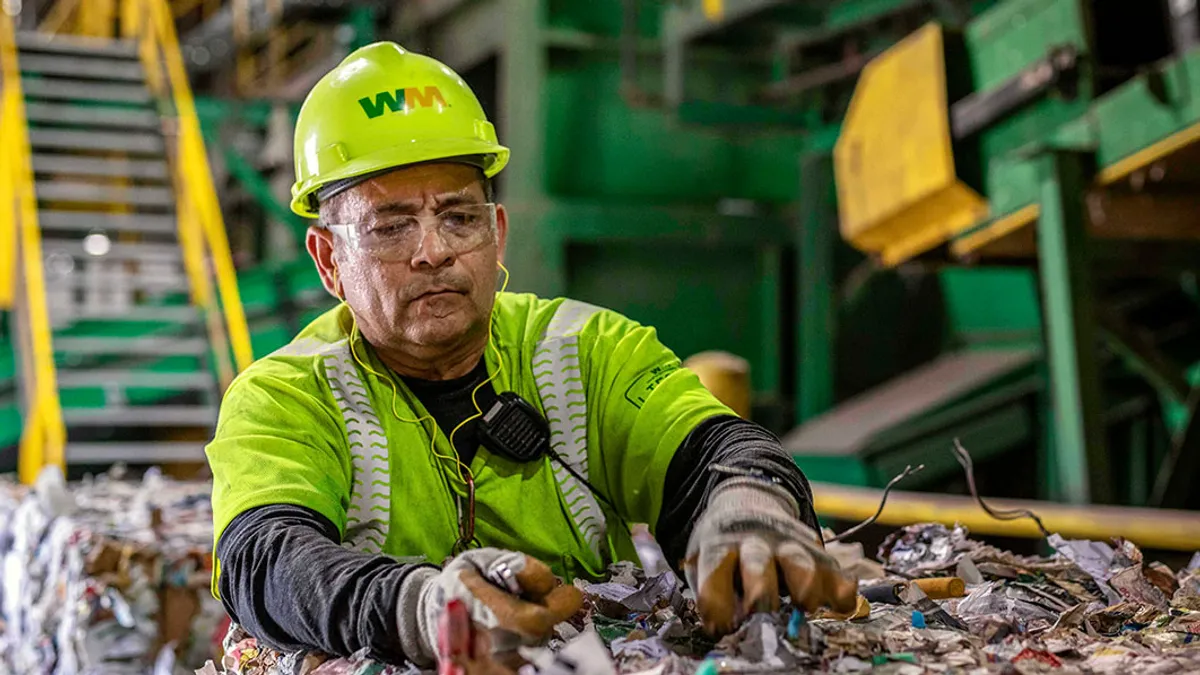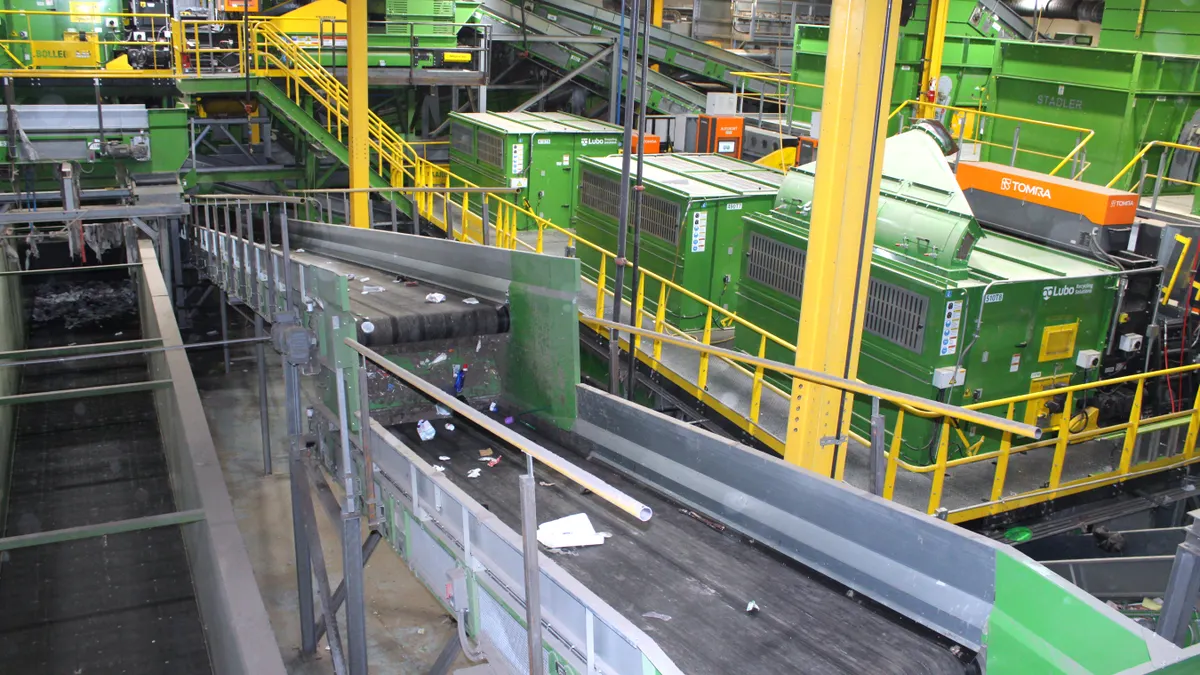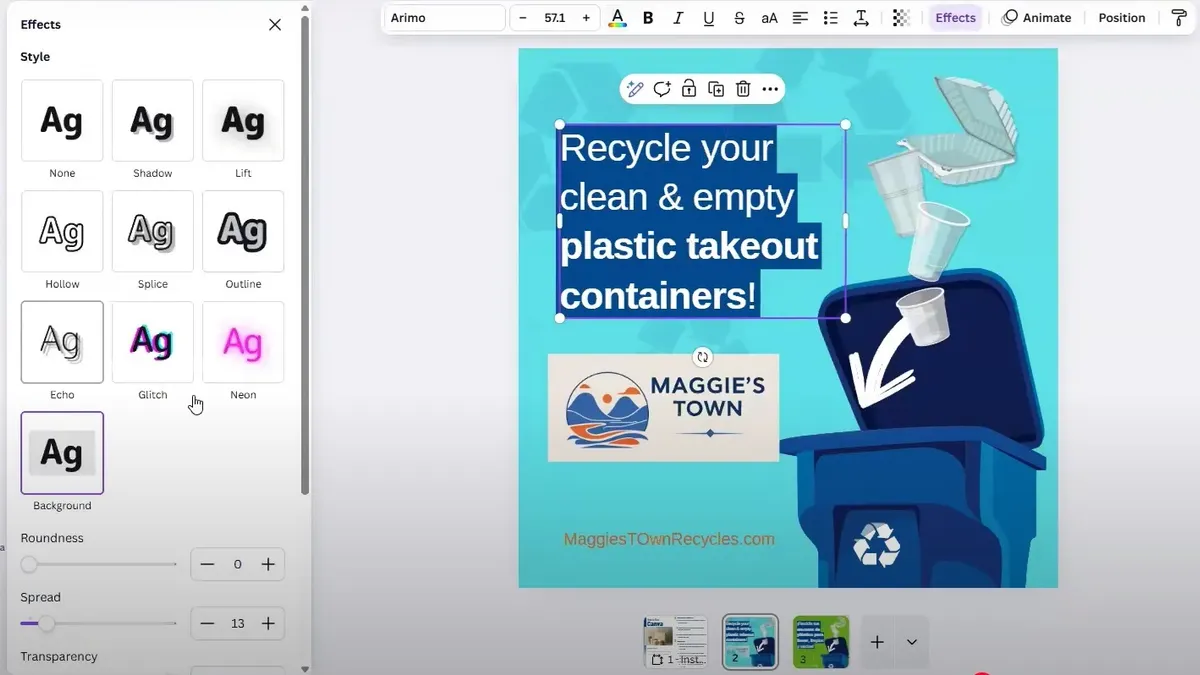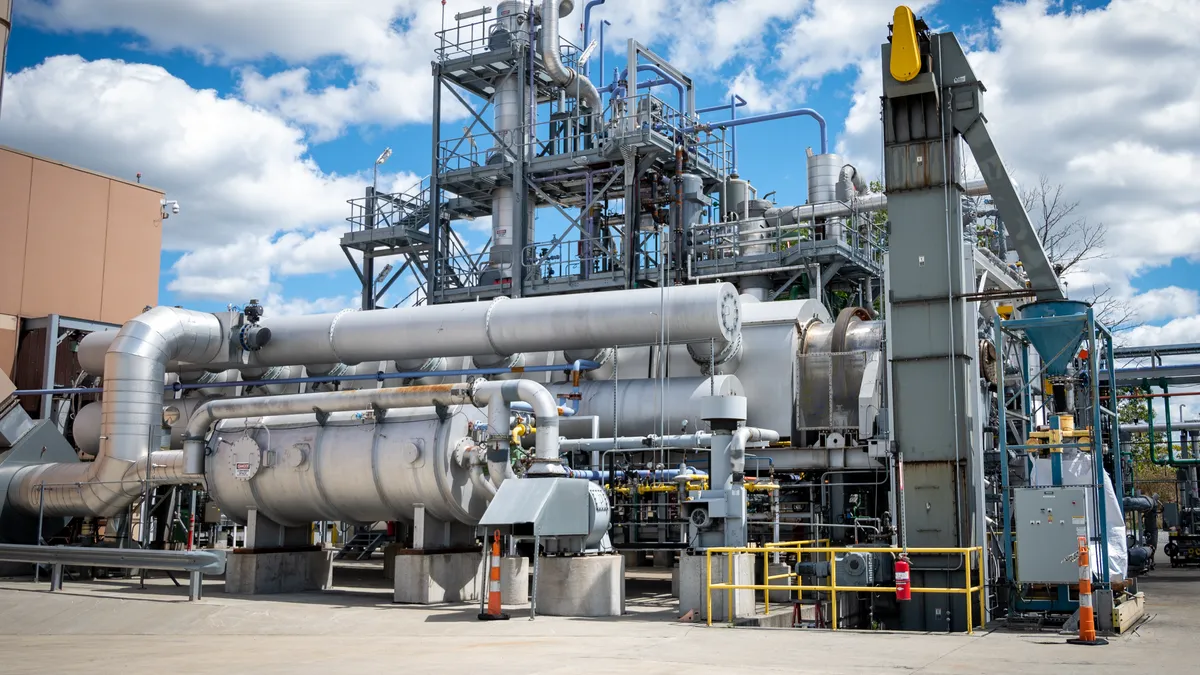WM plans to expand its recycling footprint into at least eight new locations, complete 35 automation projects and boost its recycling revenue to about $125 a ton by 2026 through a series of long-term MRF investments.
During its sustainability investor presentation on Wednesday, executives offered more details on its strategy, including key recycling investments and goals designed to help WM expand its recycling presence in North America and process higher volumes and higher-quality commodities.
CFO Devina Rankin said WM’s long-term strategies for “value creation” are not all directly tied to commodities. About 60% of the projected $125 value by 2026 is independent of commodity price levels. Instead, they’re tied to overall process efficiencies, labor efficiencies and better capture rates for recyclables, including the company’s plans to capture more recycling from residuals.
“These recycling investments do not pay off just that $125 rate. These recycling investments pay off at virtually any commodity price level,” she said.
WM estimates its combined recycling investments strategy will bring in about $240 million a year in operating earnings before interest, taxes, depreciation and amortization by 2026. WM first previewed this framework during its January earnings call.
“It's about transforming our existing facilities for the future to be more efficient, less labor intensive, all while creating higher quality material,” said Tara Hemmer, chief sustainability officer, during the Wednesday event.
Top WM executives also went into detail about its investments in renewable natural gas infrastructure and its plans for e-RINs. WM plans to invest $2.2 billion in incremental capital expenditures for both recycling and renewable energy projects over the next four years.
Expanding to new locations
A major part of WM’s recycling portfolio is its plan to expand its recycling footprint in new markets, particularly cities with high expected growth that “have limited recycling services,” said Brent Bell, vice president of recycling. WM will enter four new single-stream markets in Portland, Oregon; Oakland, California; Detroit, Michigan; and Fort Walton, Florida.
WM also has plans for two new C&D locations in Nashville and Miami, and expects to add two new commercial locations in Toronto and Brooklyn. An additional four markets could be announced later on — possibly two more single-stream markets and two more C&D markets, according to slides presented at WM’s January earnings call.
WM’s focus on increasing volume through these new markets could generate $65 million of adjusted operating EBITDA and an additional 1.8 million tons of capacity by 2026, Bell said.
Investing in new automation projects
WM is also making big investments to improve MRF efficiency through automation. WM already completed eight automation projects prior to 2023, and it expects to complete 27 more by the end of 2025 in places throughout Pennsylvania, North Carolina, Colorado, California, Texas and other states. Bell touted WM’s Chicago MRF as a model, which the company says can handle double the throughput of non-automated MRFs due to high-tech equipment.
Bell says commodities sorted at automated facilities can have a 15% higher blended commodity value, and that automated equipment can process 30% to 40% more tons. New equipment at one upgraded MRF can now separate smaller cardboard containers that used to get sorted into the mixed paper bunker, a strategy that has improved the MRF’s revenue by about $30 per ton due to cardboard’s higher commodity value compared with mixed paper, he said.
Bell also tied automation improvements to the company’s overall labor efficiency goals, saying automated sorting equipment makes MRFs safer and frees up workers to train for higher-skill positions within the company. WM expects to reduce its MRF headcount by about 1,300 positions by 2026, about a 30% labor cost per ton reduction.
The automation plans are also part of WM’s larger goal of increasing the amount of recyclables it manages from 15 to 25 million tons per year by 2030, said Rankin. WM is on track to collect 19 million tons of recycling by 2026.
Earning more from recycled commodities
WM has often touted its MRF automation investments as a way to earn higher premiums for cleaner material. The company estimates it will earn an average of $125 a ton by 2025 or 2026 for recycled commodities.
Bell said recent 2023 guidance puts that number at closer to $70 a ton, “and we expect that to ramp up” throughout the year. That compares to WM’s average commodity price of $47 per ton in the fourth quarter.
WM leadership said they’re confident in the eventual $125 price. That’s partly because of increased demand from consumer packaged goods companies that have made commitments to increase recycled content in their products. “We meet with these companies, on a regular basis, and I can tell you there's a real concern on the availability of supply for these recycled materials,” Bell said.
WM also moved to a processing fee-based model in recent years, which the company says helps keep returns strong even during commodity price swings.
WM sees recently-passed minimum recycled content legislation and extended producer responsibility laws as ideal market drivers for its recycled commodities business, which could result in four to five times the demand for recycled plastics through 2030, Bell said.
Last year, WM acquired a majority stake in plastic film recycling business Natura, a move it says will also help meet demand for postconsumer resin.



















